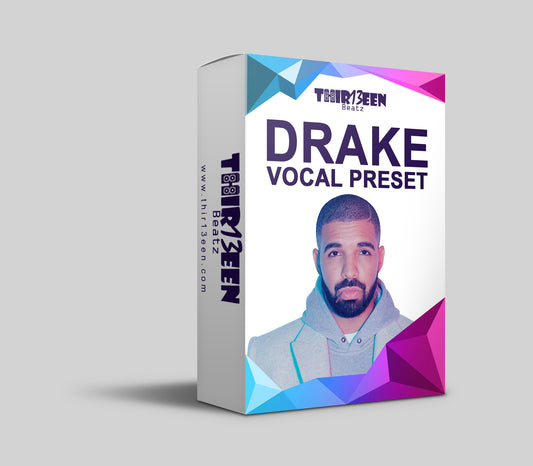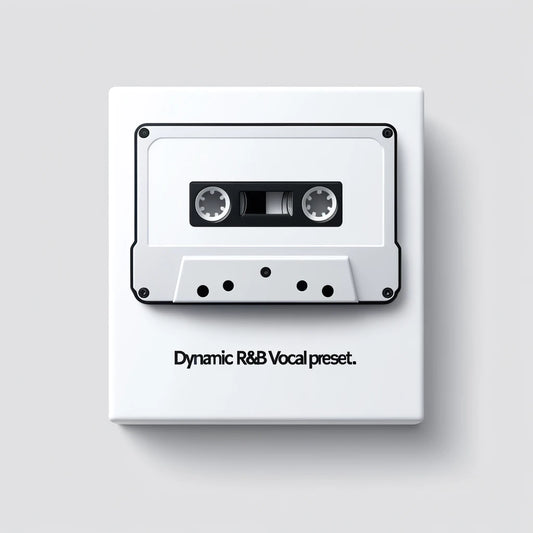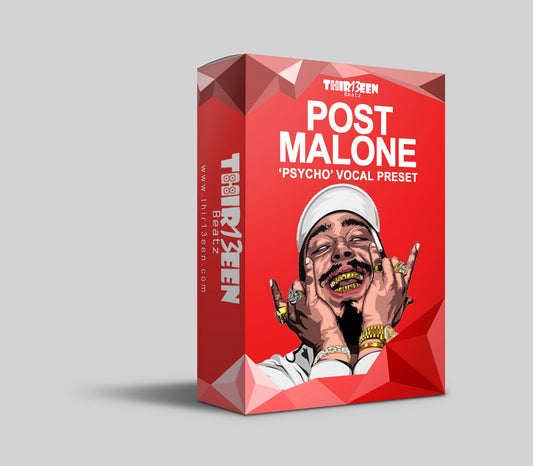Intro to Drum Types
Drums hold a foundational place in music across the globe, acting as the heartbeat of many traditions and genres. From the steady rhythms that guide a marching band to the intricate beats that define classical compositions, drums are as varied as the cultures they come from.
As a long-time music producer, I've seen firsthand how different types of drums can set the tone for a piece, adding depth and emotion that resonates with audiences everywhere.
In this post we'll embark on a journey through the percussive landscape, discovering everything from the basics of drum types like snares and basses to the unique sounds of ticker drums.
We'll delve into the fusion of snare and cymbal tickers, explore the rich variety of drums worldwide, and highlight the thunderous beats of Japanese Taiko drums and the rhythmic heart of Indian percussion. This exploration will not only showcase the diversity of drums but also underscore their significance in weaving the rich tapestry of the world's musical traditions.
The Basics of Drum Types
In the world of music, drums are the backbone of rhythm. Let's break down the basics, starting with the most common drum types: snare, bass, and tom-tom drums. Each has its unique sound and role in a band or an orchestra.
Snare Drums are known for their sharp, crisp sound. They get their name from the snare wires on the bottom that vibrate when hit. Think of the snare as the drum that keeps the beat in rock songs or marches.
Bass Drums are the giants of the drum family. Played with a foot pedal, they produce a deep, booming sound. Bass drums are like the heartbeat of a band, setting the pace for everyone else.
Tom-Tom Drums add color and depth to music. They don't have snares and produce a more rounded sound. You'll hear tom-toms in drum solos, adding excitement and variety to the music.
Together, these drums form the core of a drum set, each bringing its unique voice to the mix. Whether it's the sharp snap of the snare, the deep pulse of the bass, or the lively rhythms of the tom-toms, these drums are essential for creating the rich, complex layers of sound that define so much of the music we love.
The Unique Ticker Drum
The ticker drum is a unique member of the drum family, standing out with its distinct characteristics and uses in music. Unlike the more common snare or bass drums, the ticker drum has a special role that adds a unique flavor to musical compositions.
Characteristics: The ticker drum produces a crisp, metallic sound that resembles a tick-tock, hence the name. It's smaller in size compared to other drums, making it highly portable and versatile for different musical settings.
Uses: This drum often finds its place in ensembles where precise, rhythmic patterns are essential. It's especially popular in genres that require a sharp, staccato sound to punctuate the music, adding texture and rhythm.
In music, the ticker drum serves as a rhythmic anchor, helping to maintain the tempo and adding an extra layer of sound that enriches the overall piece. Its unique sound can turn a simple rhythm into something more intricate and compelling, showcasing the drum's ability to transform and elevate a musical piece. Whether in a live band setting or a studio recording, the ticker drum is a small but mighty force that brings energy and distinction to the sound.
Snare and Cymbal Ticker – A Fusion
The fusion of snare drums with cymbal tickers creates a dynamic duo that adds complexity and flair to music. This combination brings together the sharp attack of the snare with the bright, sustained sound of cymbal tickers, offering a wide range of rhythmic possibilities.
Role in Music: In a band or orchestra, this pair works together to enhance the rhythm section. The snare provides the backbeat, grounding the music with its crisp, emphatic sound. Meanwhile, the cymbal tickers add shimmer and texture, giving the rhythm an extra layer of interest.
This fusion is particularly effective in genres that demand a high level of energy and precision, such as rock, jazz, and marching band music. The snare and cymbal tickers together can drive the tempo, create dramatic builds, and offer moments of rhythmic surprise that keep listeners engaged.
In essence, the combination of snare drums and cymbal tickers is a testament to the creativity and versatility found in percussion. It showcases how blending different drum types can result in a richer, more vibrant sound palette, elevating the music to new heights. Whether providing the steady heartbeat of a song or bursting into an explosive solo, this duo plays a pivotal role in shaping the sonic landscape of a piece.
The Rich Variety of Drums Worldwide
Around the world, drums come in an amazing variety, each with its own unique sound, shape, and cultural significance. From the deep booms of African djembes to the intricate rhythms of Indian tablas, drums are a universal language spoken in a multitude of dialects.
African Drums: In Africa, drums like the djembe and the dundun play key roles in communication and celebrations. The djembe, known for its goblet shape, produces a wide range of tones, from deep bass to sharp slaps.
Indian Drums: India's rich musical heritage includes drums like the tabla and mridangam. The tabla, used in classical, folk, and devotional music, consists of two drums that produce a harmonious blend of rhythmic tones.
Japanese Drums: In Japan, taiko drums are used in festivals and performances, known for their large size and powerful sound. These drums, played in ensembles, create rhythms that can be felt as much as heard.
This global diversity of drums not only showcases the instrument's versatility but also its ability to bring people together. Each drum tells a story, reflecting the history, culture, and spirit of its people. Through the universal beat of drums, we connect across different cultures, celebrating the rich tapestry of human expression through rhythm.
Thunderous Beats: Types of Taiko Drums
Japanese Taiko drums are known for their thunderous sounds and deep cultural significance. These drums vary in size and shape, each type serving a unique purpose in performances and ceremonies.
Shime-Daiko: This small, high-pitched drum is often used to keep time. Its tight skin creates a sharp, clear sound, crucial for leading the rhythm in ensemble performances.
O-Daiko: The O-Daiko is a large drum that produces deep, resonant beats. It's a showstopper in performances, requiring great strength and skill to play. The sight and sound of the O-Daiko are truly awe-inspiring, embodying the power and spirit of Taiko.
Nagado-Daiko: With its elongated body and rich, full tone, the Nagado-Daiko is a versatile drum used in many Taiko pieces. Its sound can range from soft whispers to powerful roars, making it a favorite among players.
Taiko drums are more than musical instruments in Japanese culture; they are a link to the past, a tool for spiritual expression, and a way to build community. Each drum type brings its own voice to the ensemble, creating complex rhythms that tell stories and convey emotions. Through the thunderous beats of Taiko, performers and audiences connect in a shared experience of rhythm and resonance.
The Rhythmic Heart of India: Indian Drums
Indian drums, with their rich variety and intricate rhythms, form the rhythmic heart of India's musical heritage. Each drum has its unique sound and plays a pivotal role in both traditional and contemporary music settings.
Tabla: The tabla is a pair of drums, small and large, known for its complex rhythms. It's a staple in classical music, providing a melodic rhythm that's both intricate and captivating.
Mridangam: This double-sided drum is essential in Carnatic music, South India's classical genre. Its deep tones and vibrant beats accompany vocal and instrumental performances, adding depth and energy.
Dhol: The dhol is a large, barrel-shaped drum that produces a loud, bass-heavy sound. It's often used in celebrations and folk music, driving the dance with its powerful rhythm.
These drums are more than just musical instruments; they are integral to India's cultural and spiritual life, accompanying everything from religious ceremonies to festive celebrations. Each drum's unique sound contributes to the rich tapestry of Indian music, showcasing the country's diversity and the universal language of rhythm.
Marching to the Beat: Marching Band Drum Types
Marching bands bring music to life on the move, and drums play a key role in keeping the beat and energy high. Let's explore the specific types of drums that march to the beat in a band.
Snare Drums: These are the sharp, crisp voices in the marching band. Mounted on a harness, snare drummers play complex rhythms that keep the band in step.
Bass Drums: Carried vertically, bass drums provide the deep, booming pulse. Different sizes offer a range of pitches, but all give the music its heartbeat.
Tenor Drums: Also known as quads or quints, tenor drums are sets of multiple toms played by one drummer. They add melody and depth with their varied tones.
These drums form the backbone of a marching band, each contributing its unique sound to create a dynamic musical experience. Whether it's the sharp snap of the snare, the deep boom of the bass, or the melodic flow of the tenors, marching band drums ensure the music moves as one with the performers.
Conclusion to Various Types of Drums
Our journey through the world of drums reveals the rich diversity and vital role these instruments play in music across the globe. From the sharp snaps of snare drums to the deep booms of bass drums, and the intricate rhythms of tabla and taiko, each type of drum brings its unique flavor to the musical table.
These instruments are more than just tools for keeping time; they're the heartbeat of melodies, the foundation of rhythms, and the soul of compositions that connect cultures and generations.
Understanding the various types of drums and their characteristics not only enhances our appreciation for music but also highlights the universal language of rhythm that transcends geographical boundaries.
Whether in a marching band, a classical concert, or a cultural festival, drums continue to enrich the world's musical landscape, proving that regardless of where we come from, we can all march to the beat of the same drum.









